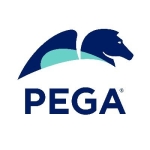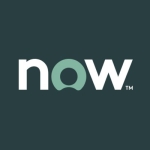We reviewed Salesforce and MS Dynamics in November last year. Clearly we chose one provider over the other but I’ll save that information for later. For now I thought I’d share the decision making process we went through to get to a “winner”. The key things for us were as follows:
User experience – Salesforce wins
Salesforce is the winner here and the user interface for Salesforce is really slick and easy to use. It’s also really quick which is a big thing although there is a different interface (not just different configuration) for service users (service cloud) compared to sales users (sales cloud) which we found to be a bit weird.
The Dynamics interface is fine but a bit uninspiring and misses some of the UX ‘tricks’ that Salesforce has got. The release that Microsoft did late last year didn’t do a lot to improve things despite the hype.
Feature richness – Salesforce wins
So basically both systems do the core CRM thing really well as you’d expect from the market leaders. Case management, sales process management, activity logging are all catered for really well. When you step out of that things get a bit more complex though with a few highlights:
Social communication is dealt with through Chatter in Salesforce and Yammer in Dynamics – both essentially paid for add-ons although Salesforce will give it away… maybe (more on that later);
Online marketing – unbelievably Dynamics is rubbish at this out of the box although a plugin called Click Dimensions is available and our marketing guys really liked this, albeit at an extra cost;
Customer support (Chat) – again this is a plugin you have to pay for in both systems.
Ease of implementation – Salesforce wins
I think its fair to say that Salesforce is a lot more polished and therefore implementation looks to be a lot easier than with Dynamics which is very much a framework that needs to be customised and adapted. The Salesforce partner we met promised an initial implementation within 2 weeks and their references said they could achieve that – impressive no doubt and not something that Dynamics can compete with.
Implementing Dynamics is always going to be harder and therefore more expensive. The requirement for training is also more of an issue in Dynamics I think.
Ability to customise – Salesforce wins
Both platforms come with substantial customisation capability. Salesforce is written in a native scripting language with an SDK and Dynamics is written in .NET so can also be customised. That said, both companies are pushing customers to use plugins and extensions through their App Exchange (Salesforce) and Marketplace (Dynamics). The App exchange is packed full of plugins and extensions to fulfil a range of requirements. The Microsoft equivalent is less packed and therefore less useful at this stage – you’d think Microsoft would just pay some companies to build apps for this to take the bad look of it but apparently not!
Ability to extend and integrate – Tie
One of our key requirements was to integrate with our email solution which at the time was Gmail. Although both providers claimed that this was ‘no bother’ at the time my experience has been that in fact, neither of them do this, or at least not very well. If you have Outlook users this is a real pain point and my advice is to be very careful – for us, we ended up moving to Office 365 (over a snowy weekend in January.. perhaps another blog) to overcome this showstopper issue.
The move to Office 365 did though open up some interesting possibilities for us in terms of integrating with Sharepoint for document management and so on.
Customer portal – Tie
So these are both CRM systems right? So you’d think the interface with the customer would be fantastic and a key selling point right?
Wrong!
Both systems are spectacularly poor at this for different reasons:
In Salesforce land this is an additional extra and comes at a premium cost. I couldn’t actually get a firm price from Salesforce on this but the numbers quoted were mind boggling. The functionality offered was also pretty uninspiring to be honest.
Microsoft’s version of this is truly one of the most pathetic things I’ve ever seen. Although it is ‘free’ it’s also completely unusable so you’ve really got 2 options – you can either pay through the nose for a partner who’ll licence one (because you can’t buy it in the marketplace because it doesn’t exist) or you can ‘roll your own’ and take the cost of developing and maintaining this yourself.
Seriously guys… one of you should sort this out!
Mobile – Salesforce wins
As a remote and growing team we decided early on that having a good mobile solution was a key requirement. We probably softened our stance on this during the process when we thought through the actual use case for apps for our remote team. Ultimately though this decision was easy – Salesforce do this very very well and Microsoft do it very very badly!
Despite a lot of fluff and bluster in the last 6 months, Microsoft are no further on with this right now.
Cost – Microsoft wins
So both solutions cost a fortune and this is a really big strategic business decision for a company like ours with around 40 -60 users. Both offer subscription pricing on a per seat basis and the list price is around £1,000 per year for Salesforce and Dynamics costs around £350 per year. For Learning Pool this meant a spend of either £50K or £17,500 per year.
Regrettably it’s not nearly as straightforward as all that because:
Salesforce will offer significant discounts depending on the number of licences you buy, the time of the year you buy them and the length of time you’ll commit contractually;
Microsoft is more straightforward on subscription licencing but you get stung on things like Click Dimensions (an additional subscription that isn’t per head but needs to be worked into your calculation), Yammer licences (which are optional) and so on;
Depending on the time of year (or time of day as I’ll come onto) Salesforce may or may not charge you extra for things like Chatter (social communication) or Mobile apps which makes it difficult to pin down the actual cost of ownership in any way;
It seems from what I’ve seen that both companies hit you for extra storage space because the initial allocation is so small… go figure…;
Sales approach – Microsoft wins
The sales approach is different for both companies. Salesforce sell direct but introduce a partner as part of the process while Microsoft sell straight through the partner from the get go.
We found the Microsoft approach more straightforward. Although the consultancy quote was a lot higher we at least had certainty on the price of the software and there were no hidden surprises really. Also Microsoft wanted a straightforward 12 month subscription which was attractive.
The Salesforce approach to sales was tremendously annoying. I think we spoke to about 10 people during the process and each of them was more confusing (and sometimes confused) than the last. While Salesforce do this whole thing about how ‘we don’t sell software’ the truth is the complete opposite and so the pricing conversation is all about discounts and free stuff. Salesforce use every trick in the book including the pathetic “big reveal” on price and tell you over and over again that they’ve never given discount like this to anyone before… total bullshit! The most irritating thing we found was that each quote looked completely different to the last. Sometimes Chatter was free, sometimes not, sometimes you paid for mobile, sometimes you were getting a ‘great deal’ on this so in the end it was very difficult to determine what the total cost of ownership was going to be. Pretty scary, especially when they want you to commit for 3 years!
Roadmap – Microsoft wins
Both companies make a lot of claims about upcoming features but I think the reality is;
Salesforce are pretty comfortable at the moment. They know they have dominance in the market and that their product works. Their roadmap is more evolutionary because they’ve done their innovating already. They’ll innovate with acquisitions but these new features come at a price;
Microsoft know they have ground to make up and they are working hard to do this, especially around integrating with the rest of the Office 365 platform and working across browsers and devices.
Both companies roll out a lot of updates as part of the service.
And the winner is? – Microsoft
If it had been Christmas morning and money was no object we would have gone for Salesforce every time. But back in the real world we were scared of the lack of certainty around pricing and the likely huge hidden costs we’d heard about and had experienced. We also knew that software implementations are always harder than the sales guys will admit and that we’d overrun on consultancy costs so we needed to keep some budget for that eventuality. For those reasons we decided that Dynamics would do enough of what we wanted in the medium term and so we went with that.
















Yes, Alin - you can. There are apps available for iOS, Windows and Android